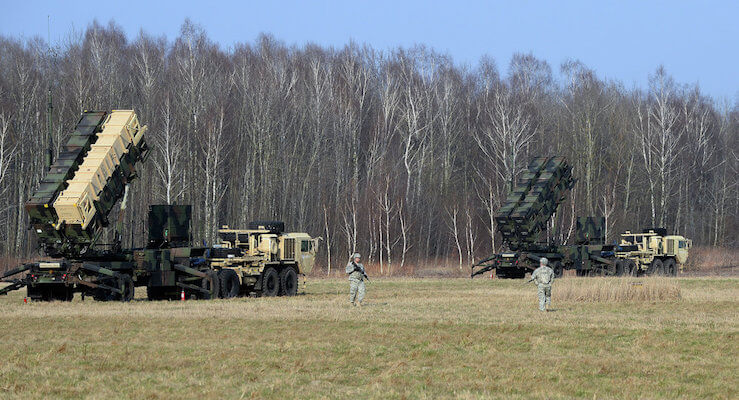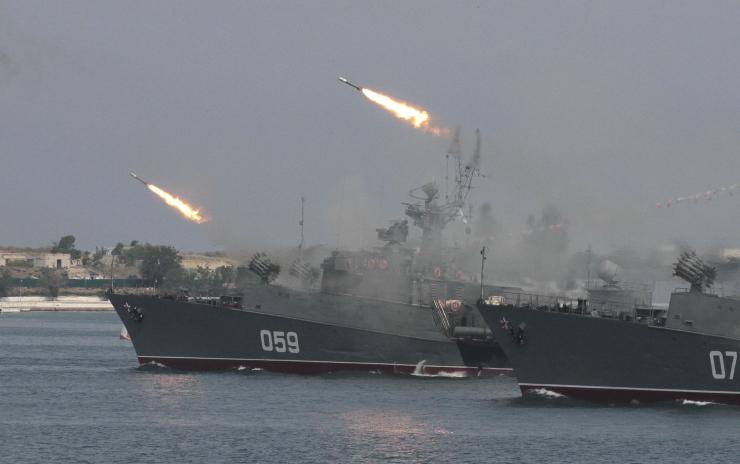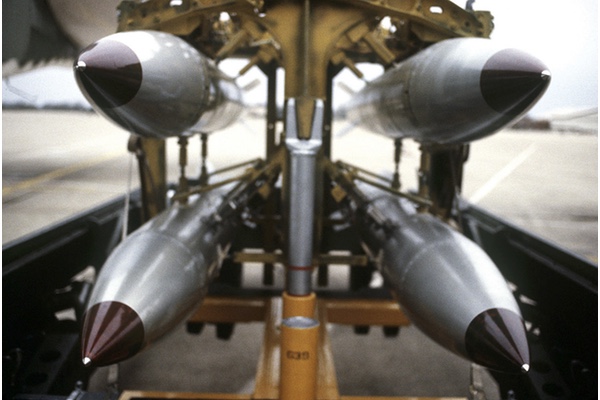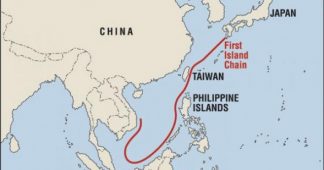By Valentin Vasilescu
Immediately after the ceremony of inauguration of the antiballistic shield at Deveselu, President Vladimir Putin said that the US military facility in Romania is directed against Russia. The shield at Deveselu would cover not Iran, but Russia and its nuclear deterrent capabilities. The defensive character of the anti-missile program is also doubtful.
For example, an intercontinental missile launched from Iran or from western Russia must have a trajectory towards the west across Europe and the Atlantic Ocean to be intercepted by the antiballistic shield in Romania or Poland. In this case, nuclear missiles will have to travel 14,000 kilometers.
When Intercontinental ballistic missiles are launched over the North Pole, having to go up over the US only 9000 km, the antiballistic shield in Romania and Poland is useless. The shield at Deveselu cannot intercept Russian missiles, unless they relate to targets in central and southern Africa, which is downright absurd.
The latest generation of Russian intercontinental ballistic missiles is equipped with “anti-shield” systems of third generation. They may launch false targets (Terek system) for sensors of anti-ballistic missiles in the infrared spectrum, plasma-derived, which reproduce the “signature” of independent nuclear warheads entering the atmosphere. The Terek system is programmed to enter into service when ballistic missile reaches the enemy’s anti-ballistic missile range. To “blind” infrared and radar interceptors SM-3 Block IB, which already arrived in space, Russian ballistic missiles also have high power microwave transmitters (ATROPUS equipment).
If the so-called US antiballistic shield in Europe was directed against a state other than Russia, Washington would have refused the repeated proposals of Russia to participate in the antiballistic shield with four radars of early warning Voronezh- M (6000 kilometers detection range), installed in Europe.
The shield at Deveselu, armed with BGM-109G Tomahawk cruise missiles?
The Americans argue that the Deveselu facility would be equipped only with anti-ballistic missiles 24 SM-3 block 1b, while Russians experts and officials say that Americans can launch cruise missiles and Tomahawk BGM-109G with nuclear warheads. The ground based AEGIS complex at Deveselu consists of a radar AN / SPY-1D and a cell type vertical Mk-41 VLS launch system, identical to the one on American cruisers of Ticonderoga class and Arleigh Burke class destroyers. The Mk-41 launch system has 90 vertical cells on destroyers and 122 on cruisers.
Vertical launch system VLS Mk-41, manufactured by Lockheed Martin, has the ability to launch ship-to-air, ship-to-ship, ship-submarine, and cruise missiles. Antiballistic rocket RIM-161 / Standard Missile 3 Block 1B is developed from anti-air missile RIM-156A / SM-2 h and has a mass of 1500 kg, length 6.6 m, diameter 34 cm, the radius of action of 500 km, maximum speed of 4.5 km / s. For comparison, the Tomahawk missile has a mass of 1500 kg, length 6.6 m, diameter 34 cm, range 1300-2500 km, and a cruising speed of 880 km / h. Each missile is delivered in a canister that is inserted into hermetic launch cells. Mk-14 canisters containing Tomahawk cruise missile have the same dimensions as the Mk-21din that launches the anti-ballistic missle SM-3 block 1b. The Tomahawk missile is armed with the miniaturized nuclear warhead W80 50 kt. American technology enables also replacing the Mk 142 kinetic cargo of rocket missile SM-3 Block 1b with the miniature nuclear warhead W80, from the cruise mini-rocket AGM-86 ALCM (which has the same mass as the SM-3 Block 1b).
The shield at Deveselu and Intermediate Nuclear Forces Treaty
The above arguments entitle Russia to treat US anti-missile systems such as the one installed in Romania and in Poland as violations of the Intermediate Nuclear Forces Treaty (INF). The treaty dates back to 1987 and allowed the removal of missiles of short-range and intermediate action (500-5500 km) from Europe. Ground-based cruise missiles fall in this category. The US was forced to withdraw 846 ballistic missiles equipped with nuclear warheads type Pershing and cruise missiles Tomahawk BGM-109G from England, Belgium, Holland, Italy, and Germany. Under the pretext of defending US from nuclear missiles from Iran and North Korea, the US would reintroduce ground-based cruise missiles BGM-109G Tomahawk into Europe via the back door. Cruise missiles based in Romania and Poland can neutralize Russian intercontinental ballistic missiles east of Moscow before they execute the launch.
Antiballistic shield has its own air defense
Romania’s air defense missile batteries consist of Soviet short-range and medium-range missiles from the 1960’s and MiG-21 20-24, which over 44 years old. Their effectiveness in front of an air attack from Russia is void. Because of the construction helmet protective compartment sensors of anti-ballistic missile SM-3 Block 1b, it emerges only at an altitude of 80,000 m. Helmet protection is covered with tiles that prevent destruction of or damage to the sensor due to kinetic heating (temperature 400 -500 degrees Celsius) due to friction with dense layers of air from the rocket during launch and its ascending trajectory. Under the height of 80,000m, missile SM-3 block 1b can guide and intercept any target. Therefore the American antiballistic shield at Deveselu needs the air defense section offered by vertical launch system VLS Mk-41 equipped with the latest generation missiles. In all ships where it was installed, vertical launch system Mk-41 VLS has allocated an air defense section composed of 30 to 40 cells, armed with three types of missiles RIM-174 / Standard Missile-6 ERAM (range action 370 km) RIM-156A / Standard Missile-2 (range 190 km) and RIM-7 Sea Sparrow (distance 19 km).
The shield at Deveselu is missing anti-submarine defense sections and striking strategic objectives defense sections of the VLS Mk-41, armed with rocket-torpedo anti-submarine ENG-139 ASROC (range 22 km) and the rocket ship -litoral RGM-165 / Standard Missile-4 with a 280 km range, Mach 3.5 (4300 km/h).
What are the risks for Romania?
As a gesture of supreme servility towards the US, Romanian authorities agreed that the status of the US base at Deveselu would be similar to the American AEGIS ship, commanded by a US Navy officer. This is why the Deveselu US military treats their Romanian colleagues as primitives. No Romanian military, not even Chief of Staff of the Romanian Army has access beyond the barbed wire fence of the US base in the center of command and control or around the radar AN / SPY-1D and vertical launch system VLS Mk- 41. Therefore nobody in Romania will really know what types of missiles and what kinds of warheads (conventional or nuclear) will be brought under the Deveselu shield, or against which targets (land, air or space) the Americans will use it.
Therefore, Mikhail Vanin, Russian Ambassador in Copenhagen, said to the countries that host components of US missile system in Europe even if you do not have nuclear weapons, you automatically become a target for Russian nuclear means. According to Russian military doctrine, these countries can be hit preventively by Russia with nuclear weapons. The Bucharest government’s decision to deploy the US antiballistic shield is incomprehensible as long as it is not useful for Romania, and there was no referendum in this regard. However, the Romanian authorities were warned of the risk of exposure of the Romania population to classic military strikes or a nuclear response from Russia.











